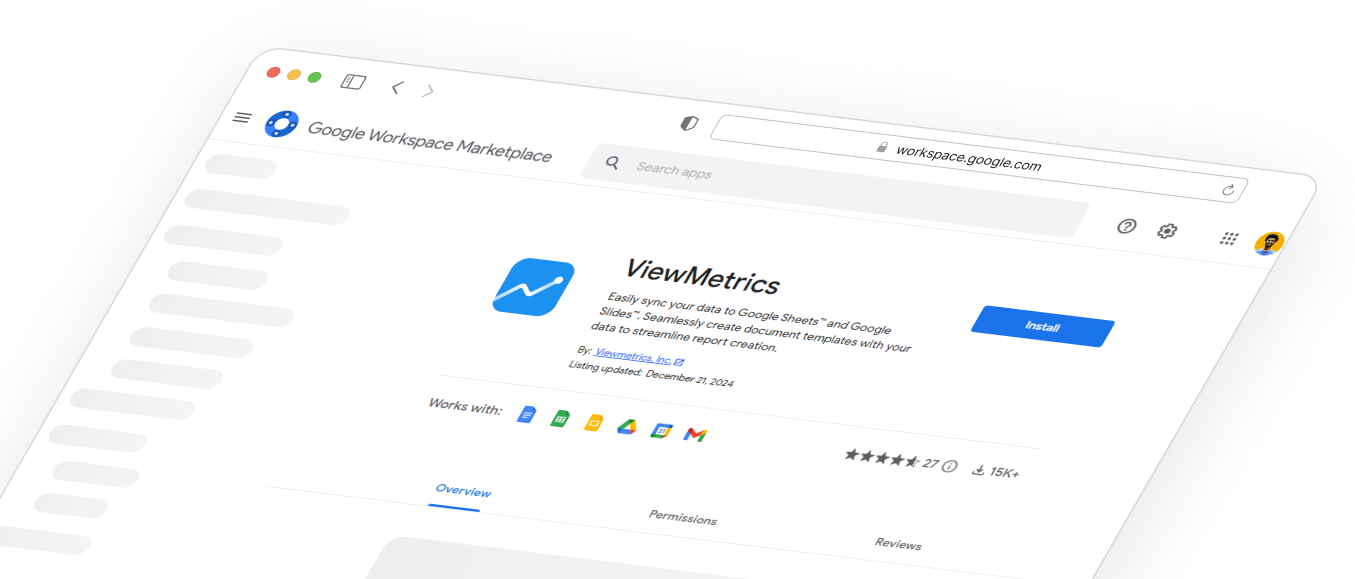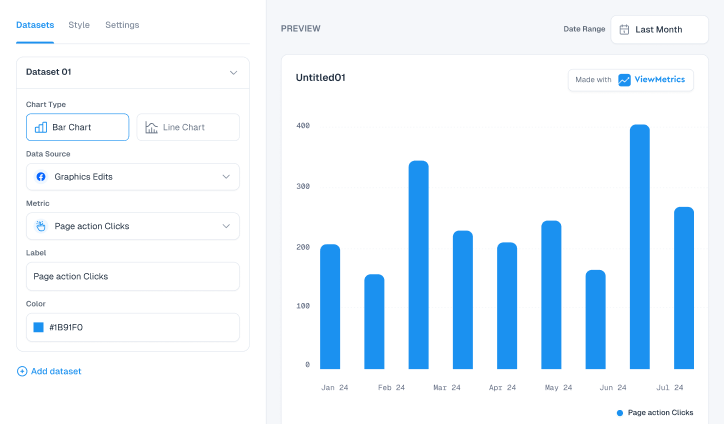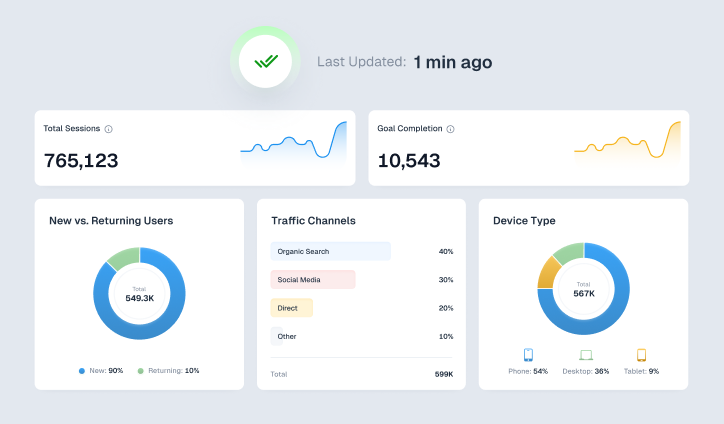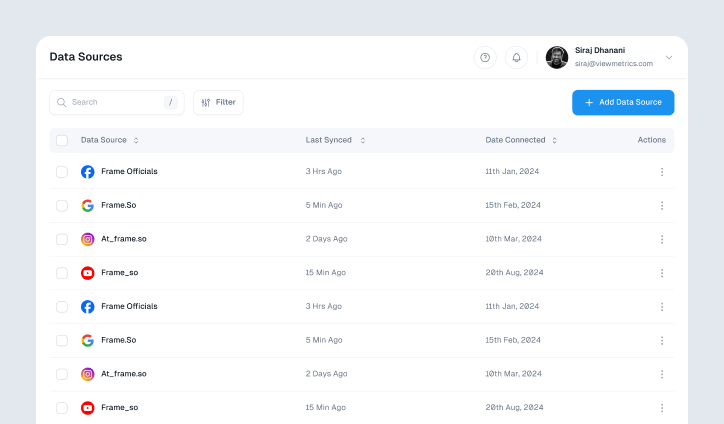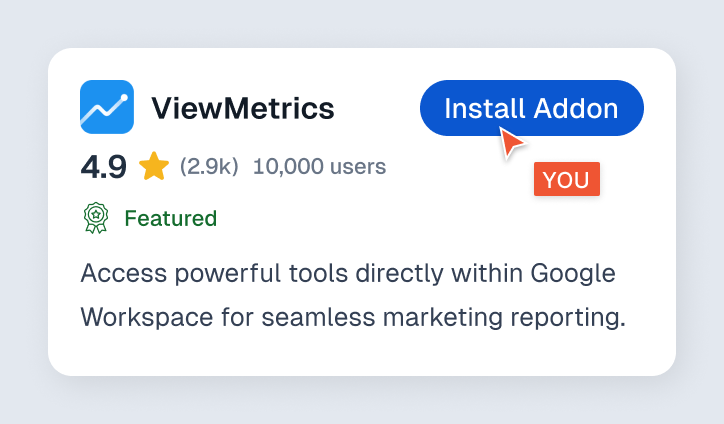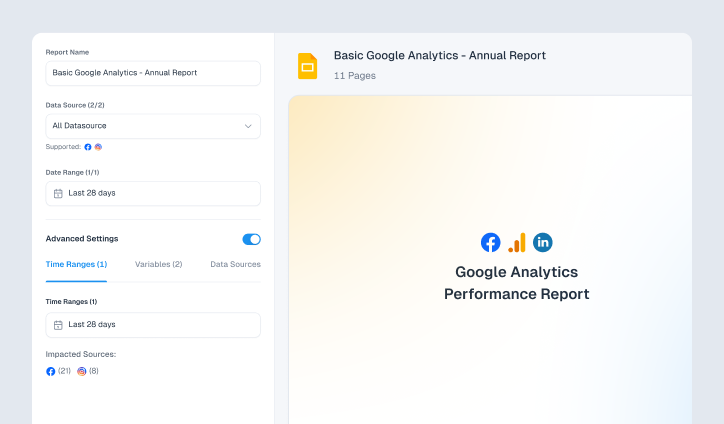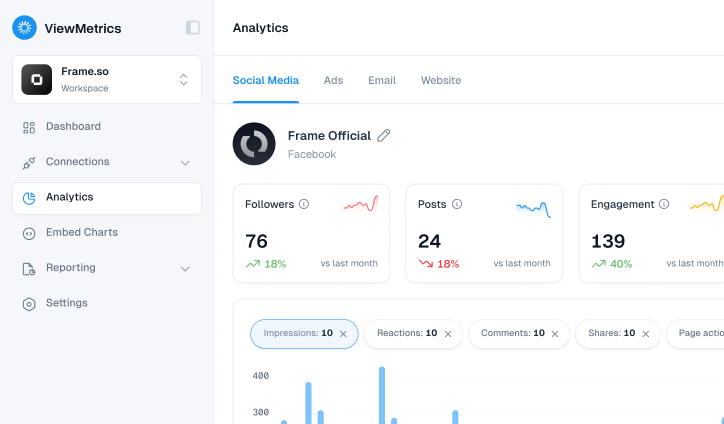Summary for the Blog
- The Marketing Efficiency Ratio (MER) is a top-level metric that measures overall marketing effectiveness by dividing total revenue by total marketing spend.
- MER provides a broad, holistic view of marketing performance, unlike Return on Ad Spend (ROAS) which focuses on specific campaigns.
- Key benefits of using MER include optimizing your budget, getting an overview of paid media, influencing business decisions, and benchmarking performance.
- To improve your MER, you should prioritize high-performing channels, improve ad spend, use analytics, conduct regular testing, and diversify your marketing efforts.
As a marketing professional, you must be aware that not all marketing metrics matter the most for business growth. While some do and some don’t, the Marketing Efficiency Ratio (MER) falls in the former. But what is it, and how to calculate MER? Read this blog to learn more!
What is the Marketing Efficiency Ratio?
The marketing efficiency ratio (MER) gives you a top-down view of how effective your marketing efforts are, calculated by dividing total sales revenue by total marketing spend within the same timeframe. Also called the marketing efficiency rating or blended ROAS, this metric captures the overall impact of your marketing activities.
However, unlike ROAS, MER isn’t for fine-tuning individual ads or campaigns. Instead, it gives a bigger picture of your marketing’s efficiency, helping you gauge whether you’re on track to reach your profitability goals. In simple terms, MER shows how wisely you’re investing your marketing budget.
Track Your Marketing Metrics with ViewMetrics!
How to Calculate Marketing Efficiency Ratio?
Calculating the marketing efficiency ratio of your marketing efforts is pretty simple and involves a straightforward formula. All you need to do is divide your total revenue by total ad spend. Below is how to calculate MER:
MER = Total revenue / Total ad spend
For Example:
Let’s say your recent marketing campaign generated $9,000 in revenue from a $4,000 ad spend.
To calculate the Marketing Efficiency Ratio (MER), divide $9,000 by $4,000 (total revenue by total ad spend).
This results in an MER of 2.25 ($9,000 ÷ $4,000 = 2.25).
So, your MER in this case is 2.25, meaning for every dollar spent, you brought in 2.25 dollars in revenue.
While MER gives a quick look at ad efficiency, you can get a deeper insight by also factoring in other business expenses like salaries, software subscriptions, and agency fees. This will help you better understand the true impact of your ads in relation to overall business costs.
View All Your Marketing and Website Data — Instantly
Connect Instagram, Mailchimp, Google Analytics & more
Pre-built dashboards, no setup needed
Save hours on reporting every week
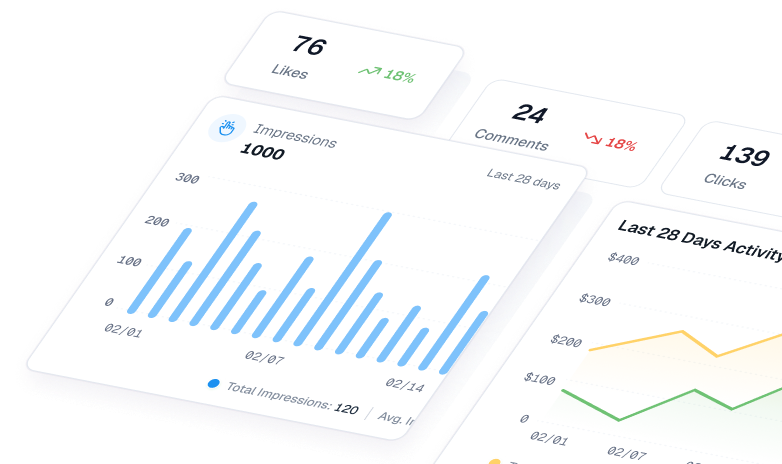
How Does MER Benefit a Business?
Calculating the marketing efficiency ratio of your marketing efforts for your business is important for several different reasons. Here are some of the main benefits of MER for a business:
1. Make Most of Your Marketing Budget
Keeping an eye on MER shifts month-to-month is a great way to gauge if your strategy is still as effective as it should be. If you start to see a decline, that’s often a clear sign to dig deeper and pinpoint where spending might need some adjustment.
2. Get an Overview of Your Paid Media Channels
Looking at all your paid media channels alongside MER gives you a fuller view of your overall performance. Instead of crediting just one platform for success, it acknowledges that each channel has its own role. Some build awareness, while others focus on driving conversions. MER captures these nuances and gives you a well-rounded perspective.
3. Influence Your Decision-Making
Grasping the MER of different campaigns enables businesses to make smart choices about where to direct their marketing resources. It helps determine whether to scale up or reduce specific efforts and guides strategies for boosting campaign efficiency.
4. Benchmark Your Marketing Performance
MER is a valuable benchmark for assessing the effectiveness of various marketing channels and strategies, allowing for comparison both within your business and against industry standards. For a deeper dive into understanding your marketing results, see our article on marketing results.
5. Overcome the Challenges of ROAS
The Return on Ad Spend (ROAS) marketing metric has its drawbacks, such as overlooking the influence of organic traffic and variations in product profit margins. MER, on the other hand, offers a broader perspective on marketing performance, delivering insights that are essential for driving overall business growth. To fully utilize your marketing data, consider implementing a marketing dashboard.
8 Ways to Improve Marketing Efficiency Ratio

MER can be extremely beneficial for a marketing team as, with its help, you can accurately track your marketing efforts and act accordingly for heightened business success. Here are eight ways to improve your marketing efficiency ratio for better results:
1. Prioritize High-Performing Channels
To maximize marketing efficiency, direct your efforts toward channels and campaigns with the highest MER, dedicating more resources where you see the strongest returns. Additionally, prioritize promoting products that are both in high demand and offer better profit margins. This way, you’re not only amplifying revenue but also enhancing your overall MER.
2. Improve Your Ad Spend
Keep a close eye on your advertising budget, fine-tuning it by shifting funds away from low-performing channels toward those that bring better returns. Use retargeting and remarketing strategies to reconnect with potential customers who have previously shown interest in your products but haven’t yet completed a purchase, giving them another chance to take action. To better track your ad spend and performance, consider utilizing SEM tracking.
3. Use Analytics and Data
Make the most of data and analytics tools to keep a close watch on your marketing campaigns, track MER trends, and pinpoint areas that could use improvement. It’s also important to factor in lifetime value when assessing MER. Focusing only on short-term revenue might not give you the full picture of your marketing effort’s long-term profitability. To help with the data side of things, look into learning more about data tracking.
4. Conduct Regular Testing
Consistently experiment with new marketing strategies and tactics, track their performance, and fine-tune them using the insights you gather along the way.
5. Enhance Personalization
Leverage customer data to craft more personalized and targeted marketing messages. This approach can boost engagement and conversion rates, ultimately driving a higher MER. For a better understanding of how to use customer data, learn more about customer journey analytics.
6. Diversify Your Marketing Channels
Adopt a diverse marketing mix that taps into multiple channels, including social media, email marketing, search engine marketing, and content marketing, to reach a broader audience and maximize impact.
7. Track Your Competitors
Stay aware of your competitor’s marketing strategies to spot emerging trends and discover opportunities for enhancing your own approach.
8. Fund Marketing Automation
Utilize marketing automation tools to simplify your marketing processes, boosting efficiency and minimizing the need for manual tasks.
Also Read: What is Automated Reporting?
Calculating MER With the Help of Viewetrics
The challenge with calculating MER is that you need data from all your advertising platforms, along with your revenue figures, typically pulled from an analytics or e-commerce tool. This means pulling together a lot of numbers from different sources, which can quickly get messy and complicated.
But you can skip all of this hassle with ViewMetrics – an automated reporting tool!
ViewMetrics helps you connect all your marketing channels and then create a unified dashboard. This dashboard will monitor all the metrics of your marketing platforms, making it easier for you to calculate MER.
View All Your Marketing and Website Data — Instantly
Connect Instagram, Mailchimp, Google Analytics & more
Pre-built dashboards, no setup needed
Save hours on reporting every week
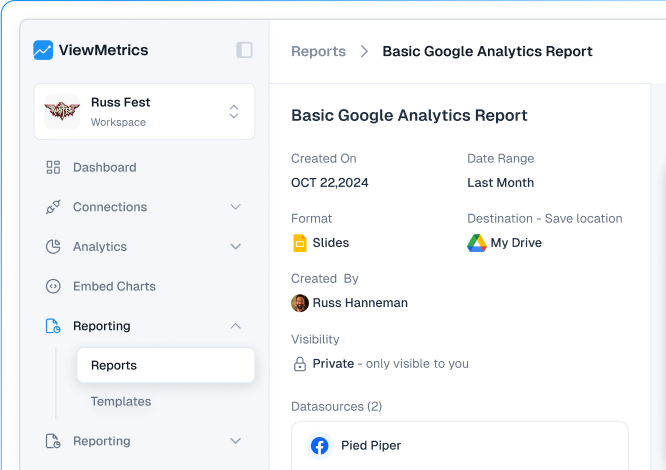
Frequently Asked Questions About Marketing Efficiency Ratio
What is a good marketing ratio?
A well-executed marketing campaign can deliver impressive results, potentially bringing in $5 for every $1 spent, which translates to a marketing ROI of 400%. But when a campaign really hits the mark, the returns can be even greater. For example, an outstanding campaign could generate $10 for each dollar invested, boosting the ROI to a remarkable 900%.
How often should I calculate MER?
Regularly calculating your Marketing Efficiency Ratio (MER), whether monthly or quarterly, is key to tracking performance and making data-driven adjustments to your strategies.
How does MER differ from ROI?
ROI focuses on the return generated from a specific campaign or channel, whereas MER provides a broader view of overall marketing efficiency by factoring in all associated costs.





